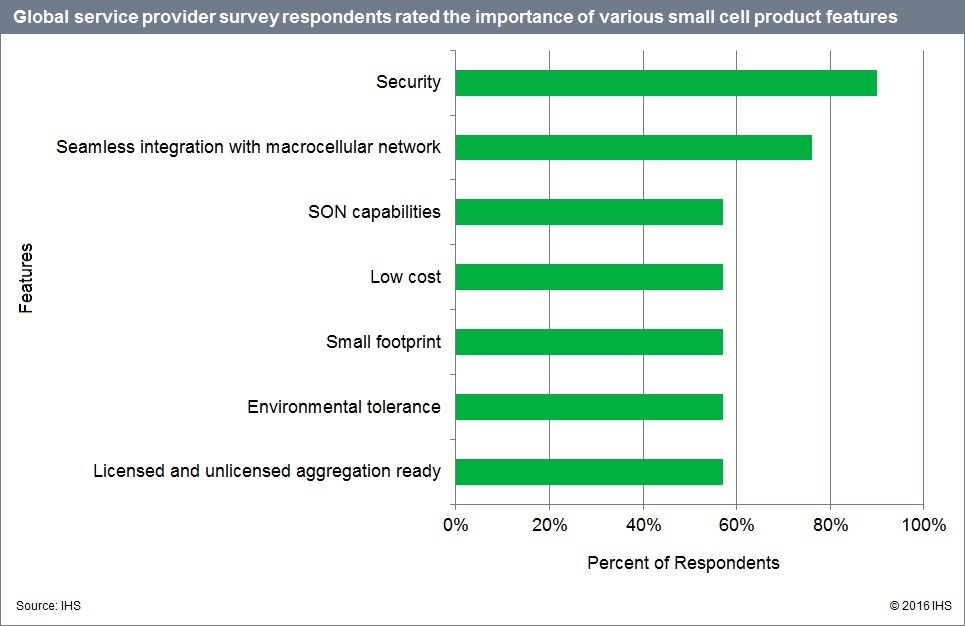IHS Markit: 90% of Mobile Operators Surveyed Have Deployed Small Cells
By Stéphane Téral, senior research director, mobile infrastructure and carrier economics, IHS Markit
Bottom Line
- The vast majority of mobile operators participating in the IHS Markit small cells survey have already deployed small cells, mostly in outdoor metro areas and in homes as residential femtocells
- Security is the number-one small cell product feature, rising from the bottom of respondents’ list five years ago
- Nokia emerged as the top small cell manufacturer among operators surveyed; its acquisition of Alcatel-Lucent has raised the “new” Nokia’s profile in the small cell space
Our Analysis
For our fifth annual small cell strategies study, we asked mobile operators if they have deployed small cells or plan to deploy them. Ninety percent of our respondents—compared to eighty-six percent last year—have already deployed small cells, while the rest plan to do so by the end of 2017. This illustrates the continued importance of adding small cells into existing macrocellular networks to close up coverage gaps and increase capacity. The principal business drivers behind operators’ deployment of small cells are lower subscriber churn and increased revenue.
Survey respondents are mostly connecting small cells to the nearest base station (BTS), but the use of gateways is rising. The bulk of small cells are being deployed in the 1.5GHz to 2.2GHz spectrum, where 3G and Long Term Evolution (LTE) reside.
When it comes to small cell product features, security has consistently risen from the bottom of respondents’ list five years ago to the top-rated feature this year after placing second last year. This is attributable to the increasing frequency and severity of security breaches and network hacking. Generally speaking, a small cell is easier to hack than a macro site that is typically not easily accessible to the public—and this will continue despite their camouflage. However, innovation in small cell installation in public spaces has led to small cells being embedded into furniture in public places such as bus stops in Amsterdam and London.
The integration of Alcatel-Lucent has led to the new Nokia emerging as the top small cell manufacturer among those surveyed, followed by Ericsson, Huawei and SpiderCloud, which continues its ascension. Nokia has the largest installed base, Ericsson leads under evaluation, and in China a flurry of homegrown players are under evaluation as well.
Small Cell Survey Synopsis
For its 30-page small cells study, IHS Markit conducted in-depth interviews with mobile operators worldwide about their small cell buildout plans. The study helps manufacturers and operators better understand the use cases for small cells, the number and types of small cells needed, the frequency bands required, and best-suited architectures.
For information about purchasing this report, contact the sales department at IHS Markit in the Americas at (844) 301-7334 or [email protected]; in Europe, Middle East and Africa (EMEA) at +44 1344 328 300 or [email protected]; or Asia-Pacific (APAC) at +604 291 3600 or [email protected]
Separately, Acute Market Reports announces that it has published a new study Small Cells and Femtocells Market, Shares, Strategies and Forecasts, Worldwide, 2013 to 2019. The 2013 study has 413 pages, 162 tables and figures. Worldwide markets are poised to achieve significant growth as small cell and femtocells and trucks permit users to implement automated driving.



